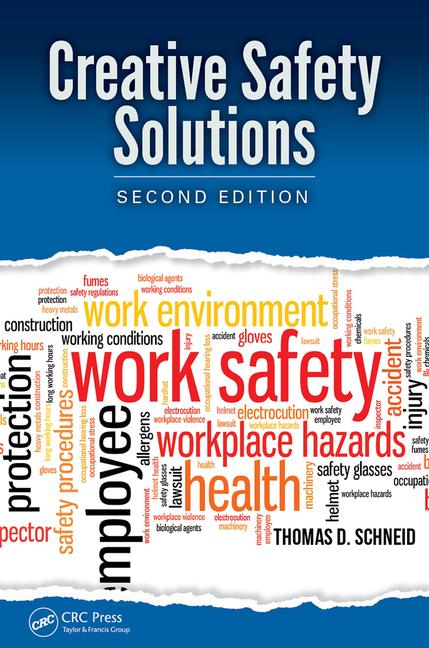 Situational Awareness Matters (www.samatters.com) s dedicated to improving first responder decision making and situational awareness in high-stress, high-consequence environments.
Situational Awareness Matters (www.samatters.com) s dedicated to improving first responder decision making and situational awareness in high-stress, high-consequence environments.
EDITOR’S NOTE: This article pertains to any workplace where risks demand mindfulness, alertness and all-around situational awareness, though the author specifically addresses fire fighters and other first responders.
To say that situational awareness is important for first responders is a ridiculous understatement. It is the leading contributing factor for first responder near-miss events and is an often cited contributing factor in casualty investigation reports.
I’d like to add the word catastrophically before the word important. It helps underscore the vital importance of situational awareness for first responder safety.
I have dedicated the past seven years of my life to the study of the art and science of decision making and to learn as much as I possibly could about situational awareness in the high-risk, high-consequence environments first responders, pilots, medical providers, soldiers, nuclear energy technicians and others work in.
The desire to improve first responder situational awareness and decision making has consumed me. I am both an active researcher and a first-responder practitioner on this subject. In addition to my direct first responder experience of 30+ years, I also completed doctoral level research on first responder decision making and situational awareness.
At one time in my career I thought I knew all about situational awareness and how to make good decisions until I went back to school and studied the neuroanatomy and cognitive psychology behind it… and there is A LOT more behind it than I ever imagined. And every day, I’m learning something new that I want to share with the community of my first responder brothers and sisters.
Here is my Twelve Ways to Situational Awareness wish list. I hope you have all of them on Christmas day and every day throughout the year.
Communications skills: This includes both listening and speaking skills. Flawed communications is a significant barrier to situational awareness. In the early days, they used to communicate by banging drums. Now we have handheld computers. Yet we’re still plagued by communications challenges. There are many opportunities for improvement in this arena.
Vigilance: To be vigilant is to be on-guard. Always on-guard. Your imagination isn’t good enough to think of all the ways this job can kill you. Being alert, even when it seems like things are routine. That is the mindset of a survivalist. Nero may have fiddled while Rome burned and eleven pipers may have piped for Christmas. Play whatever instrument you want. Just be sure you do it with your guard up. Always.
Avoiding judgment: The judging mind cannot learn. When you jump to conclusions about how firefighters are getting hurt and killed you miss some very important lessons about how things unfolded around them – why things made sense at the moment things went wrong. This Christmas season the Lord may be leaping. But keep your feet planted firmly on the ground. No jumping to conclusions.
Ask the hard questions: When your department has a near miss or a casualty event, don’t dance around the issue. Address the issues head-on. Near miss casualty events are wonderful learning opportunities. If you’re going to do any dance, make it a safety dance, not the denial dance. The moves for the safety dance result in learning, enlightenment and change. The moves for the denial dance produce anger, resentment and blame.
Debrief: There is a lesson to learn after every incident. Even when things go well there are lessons to be learned. Milk every opportunity to learn and share. If you can’t think of one, come up with a “what-if” scenario to discuss – discussing how things might have turned out if the circumstances were just slightly different.
Know your limitations: Understand and respect the limits of your conscious awareness: The average person can only capture, process, comprehend and recall 7 pieces (+/- 2) of unrelated information. Unless something happens fast to get the information on the fast track to long-term storage, it will be quickly forgotten. As you plan how to assess emergency scenes, think about the 5-7 most critical pieces of information you need to make a good decision.
Practice: To be proficient at hands-on skills, you need to practice them. A lot. Muscles learn from muscle movement. They don’t learn from verbal instructions. The Geese may be laying, but if you want to improve your safety (and your skill set) you can’t do it laying around. Get off your rumps and train.
Recipe from Hell’s Kitchen: There is a predictable pattern of events I have seen play out time and time and time again, resulting in first responder fatalities. Avoid the five Cs that make up the Recipe from Hell’s Kitchen: Complacency ->No Consequence -> Over Confidence -> Cocky Attitude -> Catastrophe.
Adopt an attitude of safety. It makes me sick to hear people say we’re being too safe or too cautious in our approach to this job. Yes, it’s a dangerous profession, but MANY of the ways firefighters are dying are preventable – VERY preventable. Pause right now and think of four people whose lives would be forever changed if you died on the job. Be sure that the risks you take on this job are worth the potential consequences on the lives that will be forever changed if you die.
Crawl-Walk-Run: All too often we want to train on advanced skills without mastering the basic skills. I encourage you to adopt the three part Crawl-Walk-Run approach to training. Start with a slow crawl through the basic movements of an activity, discussing the how and why in detail. Then walk through the sequence of events in segments. Stopping along the way to make course corrections if needed. Then, once the first two steps are mastered. Run! Run the full evolution beginning to end. If you get it right, run it again, and again. If you don’t get it right, back up to the walk phase and make corrections in the segments. It’s as simple as 1-2-3: Crawl-Walk-Run.
Use Command Teams: Firefighting crews always work in teams of at least two. But the commanders are often left to fend for themselves – working alone in a very high-stress environment. This is a set-up for failure. Strive to ensure command runs in teams of at least two as well.
Conduct 360-degree size ups: The thorough 360-degree size-up is the foundation of incident situational awareness. It allows you to figure out what the problem is before you go throwing solutions around. It can be very helpful to find out the solution you are planning to implement isn’t going to fix the problem… before things go wrong.
The mission of Situational Awareness Matters is simple: Help first responders see the bad things coming…in time to change the outcome.








